
by Helga Moser | Nov, 2025 | Bonn Sights, culinary, EN, points of interest, Rhine region, tradition
When the days get darker in the dreary month of November and the wet cold dampens the mood, I go to the Christmas market before the winter blues gets a hold of me. Around the Münsterplatz in Bonn, wooden stalls are set up and create a cosy atmosphere with Christmas decorations and bright lights. The enticing aromas of mulled wine, cinnamon, roasted almonds and delicious food inevitably lift the spirits.
At the foot of the Bonn Minster, the city is teeming with life, but at the same time it feels homely . I feel transported back in time and imagine how our Bonn ancestors came to this square in the late Middle Ages to stock up on supplies for the coming winter, to enjoy good food and drink and, of course, to exchange the latest gossip.
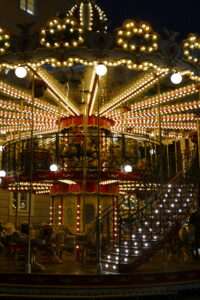
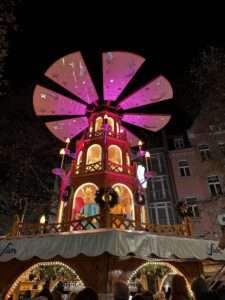 Today, more than half a millennium later, it is not much different. In a large part of the 160 wooden stalls placed between Remigiusplatz, Münsterplatz and Friedensplatz, you can buy beautiful and useful items, including hand-made crafts, which make for great Christmas presents for family and friends. Here you will find unique items that are not available in the usual department stores. Inspired by the lovingly decorated displays, you’ll discover gifts that you would never have thought of while lounging on your sofa at home. For example, original jewellery pendants or maybe hand-knitted socks made of pure wool for your daughter, who always has cold feet? And for your girlfriend, who already has everything, a new Christmas ornament is always a hit! And of course, every once in a while I need a little refreshment. The Flammlachs (salmon cooked on an open fire) smells seductive, but I usually return to the Rhine-region classic, Reibekuchen, potatoe pancakes with apple compote. In addition, the sounds of Christmas can be heard from everywhere. The happy laughter of children coming from the direction of the historic carousel reminds me of the dear little ones in my family. For them, I have to make a choice between a handcrafted wooden toy and a cute Perlgraupentier (a figurine of a German miner). Slowly, the shopping bag I brought with me is proving not big enough. But I don’t need to worry because one of the traditional stalls has a selection of beautiful baskets: I have been eyeing them for a long time. No sooner said than done – now I just have to get the hand-made wrapping paper and my Christmas market tour will be a roaring success.
Today, more than half a millennium later, it is not much different. In a large part of the 160 wooden stalls placed between Remigiusplatz, Münsterplatz and Friedensplatz, you can buy beautiful and useful items, including hand-made crafts, which make for great Christmas presents for family and friends. Here you will find unique items that are not available in the usual department stores. Inspired by the lovingly decorated displays, you’ll discover gifts that you would never have thought of while lounging on your sofa at home. For example, original jewellery pendants or maybe hand-knitted socks made of pure wool for your daughter, who always has cold feet? And for your girlfriend, who already has everything, a new Christmas ornament is always a hit! And of course, every once in a while I need a little refreshment. The Flammlachs (salmon cooked on an open fire) smells seductive, but I usually return to the Rhine-region classic, Reibekuchen, potatoe pancakes with apple compote. In addition, the sounds of Christmas can be heard from everywhere. The happy laughter of children coming from the direction of the historic carousel reminds me of the dear little ones in my family. For them, I have to make a choice between a handcrafted wooden toy and a cute Perlgraupentier (a figurine of a German miner). Slowly, the shopping bag I brought with me is proving not big enough. But I don’t need to worry because one of the traditional stalls has a selection of beautiful baskets: I have been eyeing them for a long time. No sooner said than done – now I just have to get the hand-made wrapping paper and my Christmas market tour will be a roaring success.
A toast is in order! Relaxing as Christmas approaches, I treat myself to an eggnog, a drink made from white wine, egg liqueur, vanilla and sugar, served hot and garnished with whipped cream. It actually sounds rather fearsome, but it is surprisingly delicious and hits the spot. The fact that I’m standing here alone doesn’t bother me at all. Because we are in the Rhineland it takes no time at all before I am chatting with a fellow eggnog-drinker about the Christmas season.
Of course, this will not be my only visit to a Christmas market. Like so many, I will meet up with friends for a mulled wine on numerous occasions throughout the season. It sweetens up the dreary weather – and when it’s bitter cold outside, the drinks taste even better!
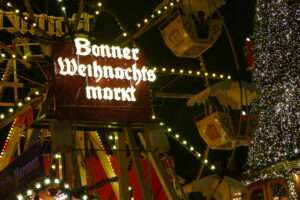 And soon, I’ll be going to the Bonn Greeters’ Christmas market meet-up, which takes place every year. We’ll be swapping anecdotes and information, taking a stroll through the rows of stalls and sampling the wares at various stands. Of course, it’s all preparation for when we show guests around the market, as Christmas markets are one of the top points of interest.
And soon, I’ll be going to the Bonn Greeters’ Christmas market meet-up, which takes place every year. We’ll be swapping anecdotes and information, taking a stroll through the rows of stalls and sampling the wares at various stands. Of course, it’s all preparation for when we show guests around the market, as Christmas markets are one of the top points of interest.
The Christmas market is open until 23 December, with stalls open from 11 a.m. to 9 p.m., and food and drink stalls open until 9:30 p.m. on Sundays to Thursdays, and until 10:30 p.m. on Fridays and Saturdays. And for those who don’t want to leave the cosy setting so quickly, Bonn Tourism there is a Holy Three Kings’ market, which will extend beyond the pre-Christmas period. It will take place on Remigiusplatz from 27 December up to and including 6 January.
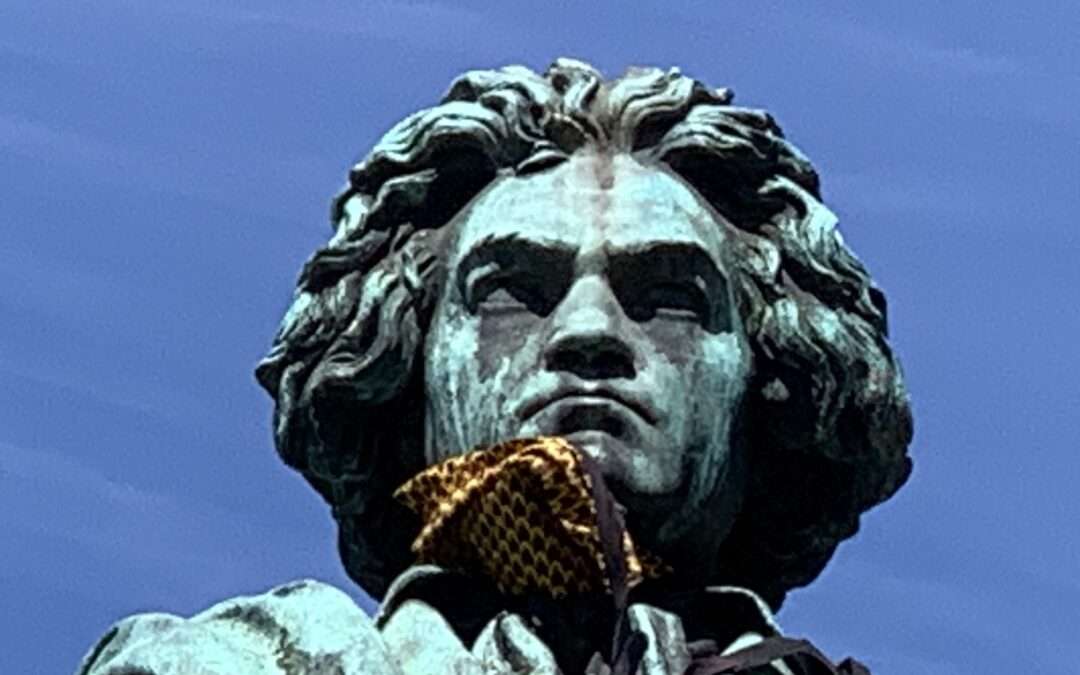
by Gert Fischer | Aug, 2025 | EN, famous people from Bonn, history, Music, tradition
Nowadays, Beethoven festivals are almost routine. They take place annually. There is stable funding (we will draw a veil over the years 1993 to 1998), early planning by the artistic director and a firm foothold in the city’s society. At the first Beethoven Festival in 1845, everything was very different.
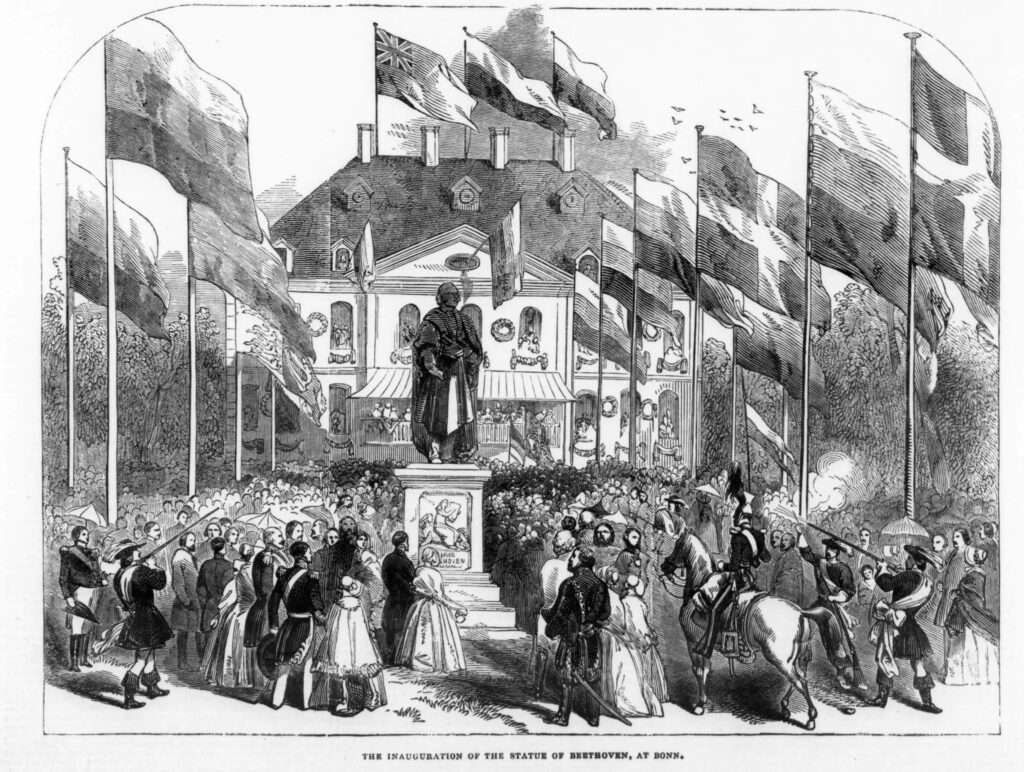
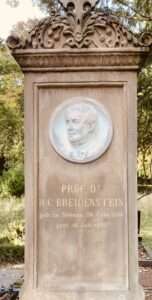 The occasion for the celebrations was not only the 75th birthday of the master, who died in 1827, but above all the inauguration of the Beethoven monument by the Dresden sculptor Ernst Hähnel on Münsterplatz. It all stemmed from what we would today call a ‘civic initiative’. At its helm was August Wilhelm Schlegel, one of the greats of the German scholarly world. His successor was a less fortunate choice. Heinrich Carl Breidenstein, the university’s ‘music director’, was a proven expert but had a difficult character. He was always controversial in Bonn society and was also openly attacked due to his enthusiasm for modern music (apart from Beethoven, he admired Liszt and Berlioz). He was simply not up to the task of organising a music festival with hundreds of guests in a small town without infrastructure or experience (Bonn had less than 20,000 inhabitants at the time). The matter was further complicated by the fact that King Frederick William IV and his guest Queen Victoria intended to attend. The support of Franz Liszt, which had already been needed to finance the monument, was a double-edged sword. Liszt’s connections were helpful, but his exuberant self-confidence was not. He polarised opinions and virtually invited criticism.
The occasion for the celebrations was not only the 75th birthday of the master, who died in 1827, but above all the inauguration of the Beethoven monument by the Dresden sculptor Ernst Hähnel on Münsterplatz. It all stemmed from what we would today call a ‘civic initiative’. At its helm was August Wilhelm Schlegel, one of the greats of the German scholarly world. His successor was a less fortunate choice. Heinrich Carl Breidenstein, the university’s ‘music director’, was a proven expert but had a difficult character. He was always controversial in Bonn society and was also openly attacked due to his enthusiasm for modern music (apart from Beethoven, he admired Liszt and Berlioz). He was simply not up to the task of organising a music festival with hundreds of guests in a small town without infrastructure or experience (Bonn had less than 20,000 inhabitants at the time). The matter was further complicated by the fact that King Frederick William IV and his guest Queen Victoria intended to attend. The support of Franz Liszt, which had already been needed to finance the monument, was a double-edged sword. Liszt’s connections were helpful, but his exuberant self-confidence was not. He polarised opinions and virtually invited criticism.
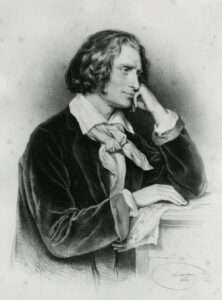 When Liszt arrived in Bonn a few weeks before the festival, at which he was to conduct alongside court conductor of Kurhessen Spohr, he immediately made his mark. He flatly rejected Breidenstein’s idea of using the Hussars’ riding arena in front of the northern city wall as a concert hall – according to a contemporary source, a ‘stinking hut’. The result was perhaps the greatest miracle in Bonn’s architectural history, which is otherwise not particularly rich in miracles: in less than two weeks, a consortium of Bonn carpenters, with the support of Cologne cathedral master builder Zwirner, erected a wooden festival hall in the ‘Raess’schen Gärten’. Today, we know this area as the car park in the Viktoriakarrée. With a height of around 7 metres, the building measured approximately 62 × 23 metres. However, it is difficult for us today to understand how contemporaries calculated that this space of just over 1,400 square metres could accommodate up to 3,000 visitors plus an orchestra and choir. The Bayernzelt at Pützchens Markt needs more than 2,000 square metres for such large numbers. In any case, the concerts are said to have been attended by around 2,000 people each. Incidentally, the hall was sold for demolition a few weeks after the end of the festival. The wish of the correspondent of the Leipziger Zeitung thus remained unfulfilled. At the end of September, he had wished the hall a long life as a music venue and not as a carnival’s hall. This is somewhat reminiscent of the current discussions about the use of today’s Beethoven Hall.
When Liszt arrived in Bonn a few weeks before the festival, at which he was to conduct alongside court conductor of Kurhessen Spohr, he immediately made his mark. He flatly rejected Breidenstein’s idea of using the Hussars’ riding arena in front of the northern city wall as a concert hall – according to a contemporary source, a ‘stinking hut’. The result was perhaps the greatest miracle in Bonn’s architectural history, which is otherwise not particularly rich in miracles: in less than two weeks, a consortium of Bonn carpenters, with the support of Cologne cathedral master builder Zwirner, erected a wooden festival hall in the ‘Raess’schen Gärten’. Today, we know this area as the car park in the Viktoriakarrée. With a height of around 7 metres, the building measured approximately 62 × 23 metres. However, it is difficult for us today to understand how contemporaries calculated that this space of just over 1,400 square metres could accommodate up to 3,000 visitors plus an orchestra and choir. The Bayernzelt at Pützchens Markt needs more than 2,000 square metres for such large numbers. In any case, the concerts are said to have been attended by around 2,000 people each. Incidentally, the hall was sold for demolition a few weeks after the end of the festival. The wish of the correspondent of the Leipziger Zeitung thus remained unfulfilled. At the end of September, he had wished the hall a long life as a music venue and not as a carnival’s hall. This is somewhat reminiscent of the current discussions about the use of today’s Beethoven Hall.
It was thanks in no small part to Liszt that hundreds of guests from out of town had gathered in Bonn on the eve of the celebrations. In addition to Beethoven enthusiasts including many Englishmen and a large group of Frenchmen led by Hector Berlioz, Liszt’s personal fan club also attended (mainly ladies who were almost hysterically devoted to him). Among them was the ‘it girl’ of her generation, Lola Montez, who was a dancer and always good for a scandal. How close she was to the maestro during those days was obvious.
The festival got off to a good start. The opening concert on the evening of August 10th, conducted by Louis Spohr, featured the Ninth and the Missa Solemnis. Even the critical critics were satisfied – although Spohr admitted that he had not known the Missa at all and had had to learn it in a crash course shortly before the concert. The next day was a day of rest, so to speak. The programme was limited to christening a ‘steamboat’ named Ludwig van Beethoven and taking it on a day trip to Nonnenwerth. On this and many other occasions, the people of Bonn held out their hands. The out-of-town guests found this unusual, and even local Gottfried Kinkel complained about the rampant commercialism and excessive merchandising.
The main reason for the festival, the unveiling of the monument on 12 August, was no longer under a lucky star. After a high mass in the cathedral, during which Berlioz had to climb over a barrier to reach his seat, the crowd gathered tightly packed on the cathedral square. It took an hour and a half before Their Highnesses, coming from Brühl, appeared on the balcony of the Fürstenberg Palace, today’s post office. The festive song composed by Breidenstein and ‘shouted by a male choir’ was blown away by the wind, as was his speech, which was delivered too quietly. The unveiling itself, however, was not the ‘scandal’ that many later generations would have us believe. Queen Victoria merely noted in her diary that it was unfortunate that the statue could only be seen from the back. It was not she, but King Frederick William IV who expressed his surprise, audible only to his immediate neighbours. Alexander von Humboldt, standing next to him, made the matter the most famous anecdote in Bonn’s city history with his reply: ‘Your Majesty, please bear in mind that Beethoven was also a rough fellow during his lifetime.’
The final day was the 13th and indeed an unlucky day. The grand morning ‘artists’ concert’ began an hour late, even though the king had asked for it to start without him and his guests. The egomaniac Liszt nevertheless delayed the start because he did not want to conduct his own cantata without royal accompaniment. This was untenable, but as luck would have it, the distinguished guests arrived just as the piece ended. So the maestro started from the beginning. The rest of the audience was not amused. After a few more items on the programme, the princes had to leave for Cologne to visit the cathedral. The audience was once again by themselves and had two more hours of music to endure. When it was time for lunch, most of the audience left the hall (‘Too much torment!’). The concert lasted until half past one.
The low point in the evening was reached at the banquet in the ‘Hotel zum goldenen Stern’ on the market square. Despite many toasts, Liszt did not acknowledge the French delegation. This led to turmoil and the ladies present fled. Only Lola Montez remained and danced on the table. Liszt had to lock her in her hotel room, where she promptly smashed the furniture.
Today’s Beethoven festivals are more civilised. The only reminder of 1845 is the iconic monument on Münsterplatz. And perhaps that’s just as well.
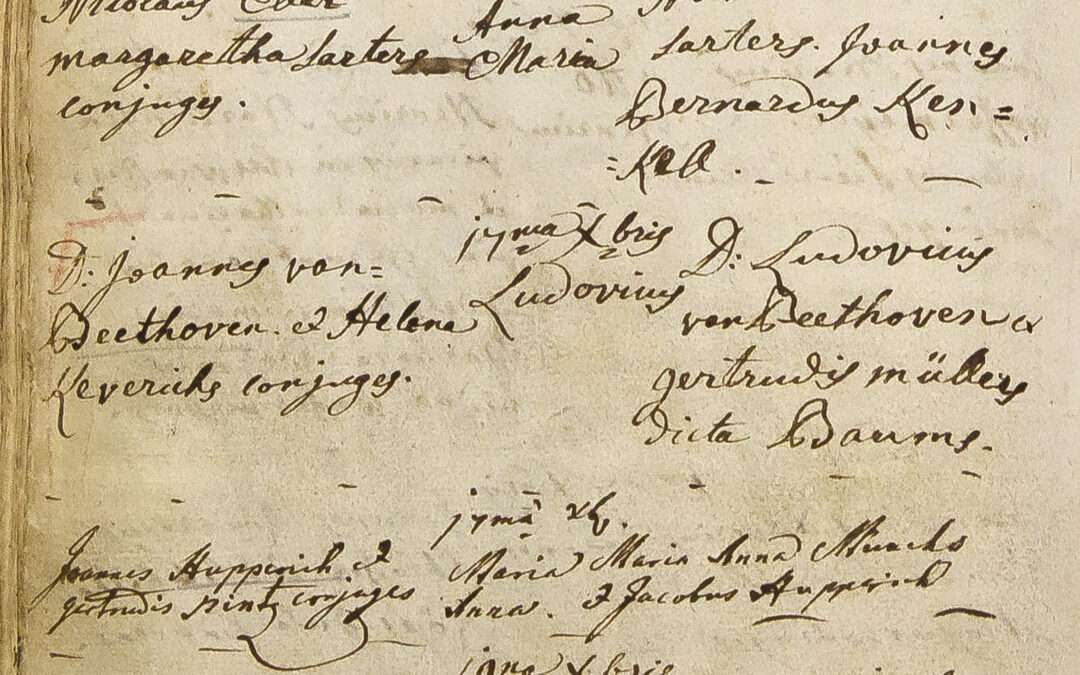
by Ursula Dillenburger-Brendt | Jun, 2025 | EN, Events, Music, tradition
On August 28th, the time has come: The Beethovenfest 2025 will open under the patronage of Hendrik Wüst, Minister-President of NRW, followed by over 100 events in and around Bonn until September 27th. During this time, the city of Bonn will be dedicated to its greatest son, Ludwig van Beethoven, and his music. The festival looks back on a long and rich history. It first took place in 1845 on the occasion of the ceremonial inauguration of the Beethoven monument on Bonn’s Münsterplatz. Composer Franz Liszt played a key role in its realisation, both as a financier and as artistic director of the entire celebration. He promptly devised a multi-day festival and, as conductor, designed the musical events in a concert hall specially built in 11 days. It was the beginning of a festival tradition that continues to this day. Initially held only on important Beethoven anniversaries, pianist Elly Ney established a regular schedule for the festival in the 1930s. Since the construction of the new Beethoven Hall in 1959, it has taken place every two to three years, and since 1999, every autumn for four weeks. The people of Bonn support the festival with two associations, the “Freundeskreis Beethovenfest Bonn e.V.” and the “Bürger für Beethoven“, and with their regular attendance.
The festival has always seen itself as a bridge between tradition and innovation, treating Beethoven’s works not as a museum opus, but as a source of inspiration for musical exploration. Beethoven’s pieces are performed, reinterpreted and juxtaposed with contemporary music. Furthermore, commissions encourage a modern, direct engagement.
This year’s festival motto “Alles ultra”, loosely adapted from J.W. von Goethe, is fitting. The slogan stands for the pursuit of new things, creative innovation, and the pushing of boundaries. While Goethe denounced the excesses of his contemporaries as a problematic development resulting in disorientation and mediocrity with “Everything but… is now ultra! Everything transcends unstoppably, in thought as well as in action” in 1825, in Bonn 2025, “Everything ultra” is reinterpreted and understood not only as an interpretation of world events but above all as an expression of Beethoven’s nature and his musical genius. For it was precisely the nonconformist Beethoven who often took uncharted paths and actively and innovatively approached the future. Appropriately, artistic director Steven Walter is promising “around 100 events to celebrate our colourful, vibrant, and, despite all the social concerns, also full of opportunities. A festival is dedicated to human diversity, the positively crazy, and the humanistic “ultras” – entirely in the spirit of Beethoven” and promises: “The Beethovenfest Bonn 2025 will be loud, it will be surprising, it will be chic, it will be moving – and certainly ultra!” – Well then!
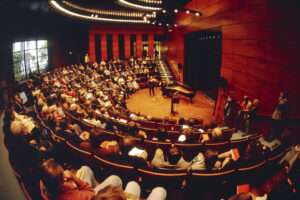 If you look through the Beethovenfest program, you will indeed discover a lively potpourri of concert forms. As expected, there are the major symphony concerts at the Opera House by famous orchestras playing works by Beethoven (2nd, 3rd, 5th, 6th, 7th, 8th Symphonies as well as the Violin Concerto – after all, it is still the Beethovenfest), but also symphonic works by Mozart, Shostakovich, Stravinsky, and others. Also notable are the many chamber concerts taking place at a wide variety of venues: Classical chamber music, with piano and string ensembles, is primarily represented in the Chamber Music Hall of the Beethovenhaus. At the other venues performances are mixed according to the motto “Anything but classical” where unusual, new and even improvised interplay between various instruments creates unusual yet fascinating sound experiences. For example, the Kreuzkirche offers cross-genre soundscapes, a walk-in musical theatre and relaxed after-work concerts. The “Pantheon,” “Harmonie,” and “Haus der Springmaus” cabaret theatres offer a colourful mix of performances, and percussion concerts are popular at the Dransdorf tram station.
If you look through the Beethovenfest program, you will indeed discover a lively potpourri of concert forms. As expected, there are the major symphony concerts at the Opera House by famous orchestras playing works by Beethoven (2nd, 3rd, 5th, 6th, 7th, 8th Symphonies as well as the Violin Concerto – after all, it is still the Beethovenfest), but also symphonic works by Mozart, Shostakovich, Stravinsky, and others. Also notable are the many chamber concerts taking place at a wide variety of venues: Classical chamber music, with piano and string ensembles, is primarily represented in the Chamber Music Hall of the Beethovenhaus. At the other venues performances are mixed according to the motto “Anything but classical” where unusual, new and even improvised interplay between various instruments creates unusual yet fascinating sound experiences. For example, the Kreuzkirche offers cross-genre soundscapes, a walk-in musical theatre and relaxed after-work concerts. The “Pantheon,” “Harmonie,” and “Haus der Springmaus” cabaret theatres offer a colourful mix of performances, and percussion concerts are popular at the Dransdorf tram station.
The Beethovenfest Bonn has always been distinguished by its international appeal and high artistic quality. The program serves as a platform for encounters and artistic exchange between renowned musicians and up-and-coming young talents. As part of the Fellowship Program and the Beethoven Talents program, young musicians are given the opportunity to make the leap to the stage with exclusive master classes, coaching, and concerts. Bonn pianist Fabian Müller, now a star of the Bonn music scene, has already taken this path. He will be represented at the Beethovenfest with five concerts. He will conduct his own orchestra with Beethoven’s Symphonies Nos. 2 and 3 and, over four evenings, he will complete his project to play all 32 Beethoven sonatas, spread across two festivals. He will precede each Beethoven work with his own musical preface. Listening to him is a pleasure, and attending one of his concerts is highly recommended.
“Alles Ultra” from August 28 to September 27, 2025, in Bonn? The Beethovenfest, with its blend of traditional and innovative, will offer us a sizzling mix where everyone is sure to find something for themselves and can even be tempted to try something new. I’m looking forward to it!
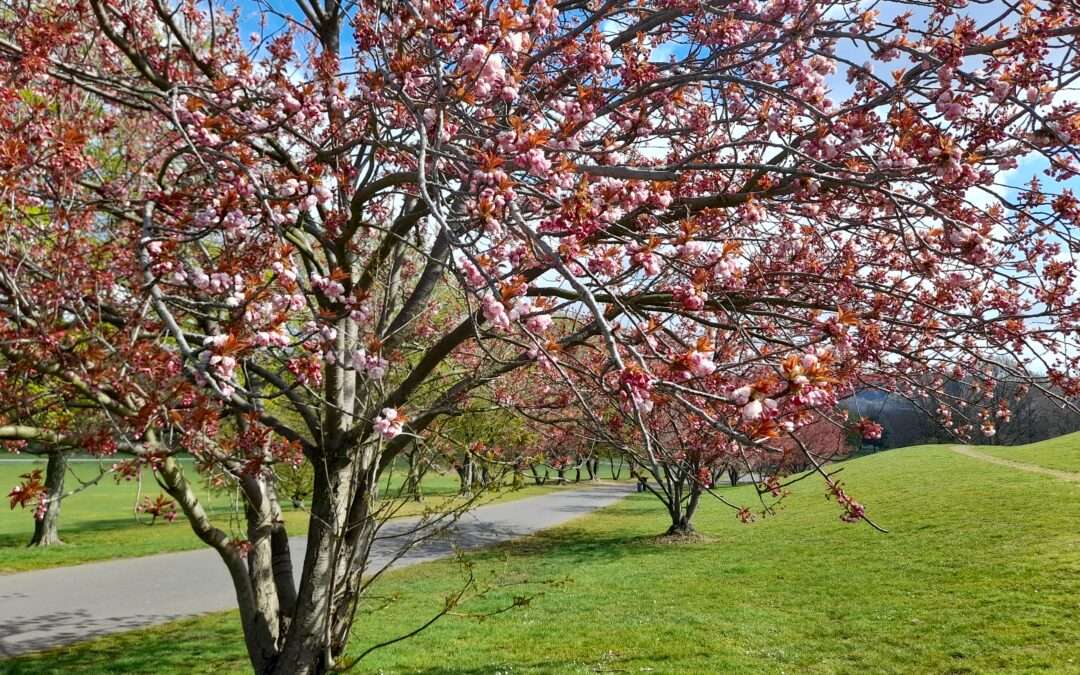
by Helga Stark | Apr, 2025 | Bonn Sights, EN, points of interest, tradition
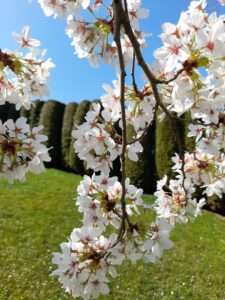 In the first phase the white-flowered cherries, such as the plum cherry in Wolfstraße, Franzstraße or in the Rheinaue, bloom. After that it takes about 14 days for the thick pink-flowered Japanese flowering cherries (especially in Breite Straße and Heerstraße) to delight the eye.
In the first phase the white-flowered cherries, such as the plum cherry in Wolfstraße, Franzstraße or in the Rheinaue, bloom. After that it takes about 14 days for the thick pink-flowered Japanese flowering cherries (especially in Breite Straße and Heerstraße) to delight the eye.
How did Bonn get these magnificent cherries in the first place? In the 1980s, the Old Town (which is actually the Nordstadt and was only renamed ‘Old Town’ for tourist reasons) was redeveloped. Traffic was forced to slow down and Japanese cherries were planned to provide a splash of colour. The cherry trees were a gift from the Japanese government to Bonn and the city planner Brigitte Denkel made sure that they were planted. The cherry blossoms symbolise the friendship between Japan and Germany.
In many cultures, cherry blossoms have a special symbolic meaning, especially in Japan, where they are a symbol of beauty, transience and new beginnings.
On weekends there is also a flea market, design market and food market, which attract tens of thousands of people on the streets. All the shops, cafés and pubs in the area are prepared for the crowds. Those who prefer it quieter come during the week, in the morning or evening. Night photos of the cherry blossoms are also worth the visit after hours.
If you don’t want to plunge into the hustle and bustle, you can find Japanese cherry trees in Beuel, for example, on Professor-Neu-Allee or in the Rheinaue park.
My personal favourite cherry blossom spot is a small avenue in the Rheinaue near the Japanese garden: these cherry trees were donated by a Japanese choir that performs Beethoven’s ‘Ode to Joy’ every year with about 5,000 singers. The cherry trees were a gift in honour of Beethoven’s birthplace. Beethoven is as revered in Japan as the cherry blossom, but that’s another story…
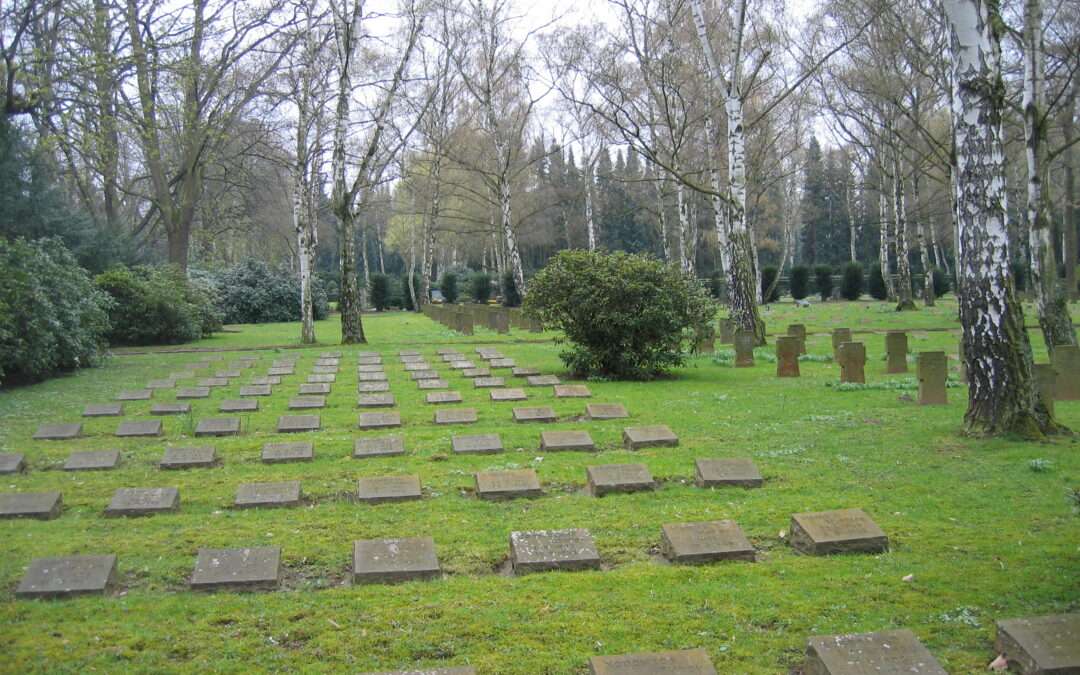
by Gert Fischer | Mar, 2025 | EN, points of interest, tradition
With the Old Cemetery in the city centre, the Bad Godesberg Castle Cemetery and the Poppelsdorf Cemetery, Bonn has three outstanding burial sites due to their significance, ambience or location. If you add to this the village churchyards in some districts that are still preserved and date back even further, Bonn’s cemetery landscape is almost worth a trip. This historical heritage overshadows the more modern facilities.
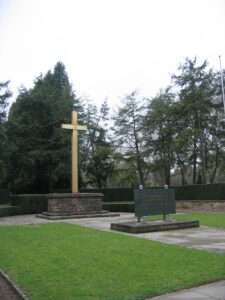
Photo: A. Savin
Thus, Bonn’s largest cemetery by far, the Nordfriedhof on Kölnstraße in today’s Auerberg district, is perhaps the Cinderella of cemeteries. Opened in 1884 as the official successor to the Old Cemetery, which could no longer be expanded, the Nordfriedhof got off to a bad start mainly due to its location. More than three kilometres from the centre of Bonn, it was on the far northern outskirts of the city. It only received a rail connection in 1906, when the Rheinuferbahn (Rhine bank railway) started operating. In the first decades of its existence, it was located in an open field. On the way there, you passed the smouldering rubbish heap where today’s Sportpark Nord is located, the Rheinische Provinzial-Irrenanstalt (today the LVR-Klinik Bonn), the Städtische Hilfshospital für Geisteskranke, Epileptiker und Trunksüchtige (a municipal hospital for the mentally ill, epileptics and alcoholics) and the orphanage and correctional home, which was located on the former site of the leprosarium (an isolation ward for infectious diseases). And contemporaries were certainly also aware that the cemetery area included the former place of execution with the gallows and the Schindanger, where animal carcasses that could no longer be used were disposed of. It is therefore not surprising that the so-called ‘better circles’ at the time sought burial sites elsewhere. After 1905, this was also officially possible. Those who lived ‘west of the railway’ could be buried in the cemetery of the recently incorporated Poppelsdorf. The inhabitants of the southern and western parts of the city made ample use of this opportunity. The Nordfriedhof thus became the cemetery for the city centre and the northern part of the city. Accordingly, the names of the families buried here that are significant in local history are linked to this part of the city. The graves of professors and wealthy individuals were buried mainly in the Poppelsdorf Cemetery, as were those of many of Bonn’s dignitaries.
Nevertheless, the North Cemetery gradually gained its place in the Bonn cemetery landscape. It changed for the better as a park, designed in an exemplary manner including a large chapel added in 1913. Its subsequent three expansions prove that it has become a popular cemetery. Even the reckless handling of some of its remnants could not prevent this. In the 1960s, for example, rows of gravestones were cleared when the main entrance was widened, and the neo-Romanesque gate was demolished. As a result, the list of ‘preserving-worthy’ grave monuments is short compared to the size of the cemetery.
The character of the Nordfriedhof as a cemetery of honour represents a special chapter. The beginnings of this development lie in the First World War. Today, not only the German victims of two world wars are buried here, but also numerous forced and foreign labourers as well as prisoners of war. Initially a place of local remembrance, the war cemetery and cemetery of honour became the central ‘Memorial of the Federal Republic of Germany for the Victims of War and the Victims of Tyranny’ in 1980 (today in Berlin at the Neue Wache). At that time, the bronze plate designed by Hans Schwippert – known as the architect who converted the Pedagogical Academy into the Bundeshaus and Palais Schaumburg into the Federal Chancellery – was transferred from the Hofgarten to the Nordfriedhof for this purpose. One of the more embarrassing chapters in Bonn’s history is that in 2017 it was stolen and replaced by a copy in sandstone.
As a relatively modern cemetery, the Nordfriedhof was not consecrated by a Catholic priest and was not bound to historical structures. Therefore, it reflects the developments that have shaped the funeral industry in the recent past better than many older cemeteries and those that are subject to preservation orders that restrict them to an earlier state. For example, a Yazidi cemetery is integrated into the Nordfriedhof. There are graves where the Greek Orthodox or Russian Orthodox rites were observed, as well as an area for children who died in the womb or at birth. And since 1990, it has had an Islamic burial ground.
A walk through the Nordfriedhof Cemetery is therefore not so interesting if you are interested in art, historically significant graves and famous names. Rather, it is a generously laid out park that reflects the social structure of Bonn city centre and the north of Bonn. Nevertheless, exciting discoveries are not out of the question. For example, there are three graves of members of the Sikh religious community who came to Bonn with the British occupation troops after the First World War. Or the grave of the singer and entertainer Fereydun Farrochsad, who was murdered in Bonn in 1992 in the name of the Islamic revolution in Iran.
Furthermore, the Nordfriedhof is of ecological interest. It has remarkable trees and, due to its size, a wide variety of animal and plant life. With the support of the Rotary Club, the city of Bonn is using it as an experimental area for ‘future trees’ – as a ‘climate grove’.
It is to be hoped that the restoration work on the cemetery chapel, which has been going on for two years now, will finally be completed. Until then, funeral services are held in an unworthy plastic tent. The North Cemetery is still worth a visit!
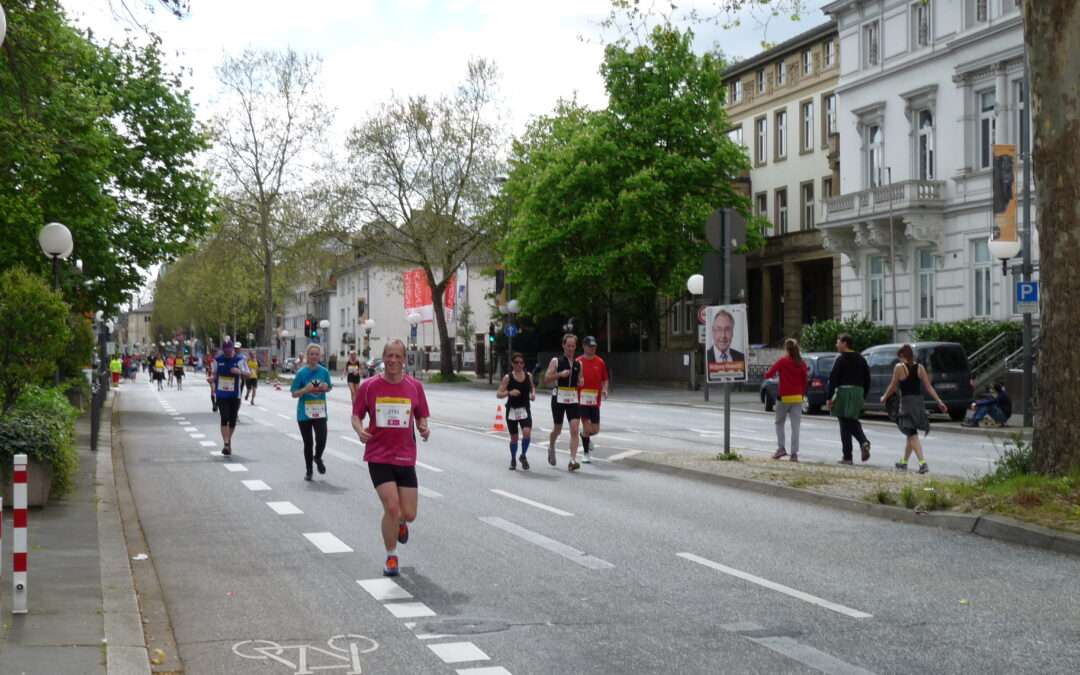
by Stefan Heinze | Mar, 2025 | EN, Sports, tradition
I moved to Bonn in 1986. Shortly after that, I met Helmut Thillmann at a seminar. He organised the early-morning sports and showed us how relaxed he could run fast and long when we went jogging.
What he didn’t tell us is that on 29 January 1986 he, together with Karl Lennartz, Axel Bosse, Hansjürgen Melzer, Thomas Greiser and Wolf-Dirk von Berchem, founded the ‘Marathon Bonn e.V. (source: GA from 5.4.2016). A significant amount of time was needed for the planning and organisation. Three years later – marking Bonn’s 2000th anniversary – the first marathon took place on 10 June 1989 in the former capital.
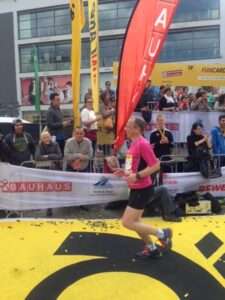 Closing streets for a marathon was new for Bonn. The administration provided arguments against, such as, ‘The runners should stop at red lights’ (Source: GA from 11.06.2024) Despite this, a date in summer was chosen because it is traditionally a marathon-poor time. In addition, in the 1980s, shops closed at 2 p.m. on Saturdays, and most employees had the day off.
Closing streets for a marathon was new for Bonn. The administration provided arguments against, such as, ‘The runners should stop at red lights’ (Source: GA from 11.06.2024) Despite this, a date in summer was chosen because it is traditionally a marathon-poor time. In addition, in the 1980s, shops closed at 2 p.m. on Saturdays, and most employees had the day off.
At the first marathon in Bonn, 2,443 runners finished, including 156 women. The time limit was five hours. It is hard to imagine today that 375 men and 10 women broke the magical three-hour mark. 1969 athletes completed the course in a time of under four hours. (Source: ibid.), On 5 June 1993, after the fifth marathon, the sponsor withdrew. The quote from back then: ‘For that money, we could get a season’s advertising deal with 1. FC Köln.’ (Source: ibid.)
It was not until 2001 that the marathon was permanently reinstated. Since 2005, the half marathon has also been offered. In 2005, I started running as a former judoka. The beginning was difficult – and it took until the summer of 2006 for me to complete the so-called small bridge 10 km lap (Kennedy and South Bridge) for the first time. That’s when a raffle was held by my employer: up to 25 starting places including preparation training. What could possibly go wrong? At worst, I win!
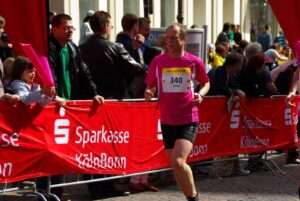 What I didn’t realise was that everyone who entered would win! Experience shows that only a few people stick to their training schedule from the beginning until the race in April. In addition to the twice-weekly training sessions starting at the company gate, there are Sunday runs starting at Kloster Heisterbach. And Helmut Tillmann is also one of the trainers!
What I didn’t realise was that everyone who entered would win! Experience shows that only a few people stick to their training schedule from the beginning until the race in April. In addition to the twice-weekly training sessions starting at the company gate, there are Sunday runs starting at Kloster Heisterbach. And Helmut Tillmann is also one of the trainers!
In Janaury 2007 the storm Kyril hit during the running training phase. Hence the 28 km Sunday run took a lot longer than usual due to the many detours needed. Comment from the trainer: I’ll register everyone who is still registered for the half marathon for the marathon.
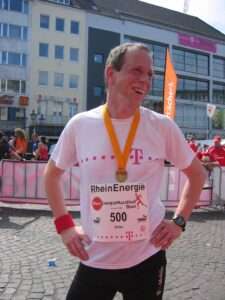 And so, without ever having participated in a half marathon, I ran my first marathon on 22 April 2007. For the last time, the route also went through Godesberg, Rüngsdorf, Friesdorf, Poppelsdorf, past the Sportpark Nord to Josefshöhe and then to the market square.
And so, without ever having participated in a half marathon, I ran my first marathon on 22 April 2007. For the last time, the route also went through Godesberg, Rüngsdorf, Friesdorf, Poppelsdorf, past the Sportpark Nord to Josefshöhe and then to the market square.
Today, the marathon course is twice the half marathon distance: starting near the opera house, over the Kennedybrücke and then south to the Südbrücke and parallel to the Rhine back towards the Kennedybrücke. A samba band plays at the bridge ramp to support the runners and pick up the pace. A large loop around the Beethovenhalle and then along the Rhine promenade (where the Bonn Rowing Club provides the runners with Kölsch beer) to the Rheinaue and on to the Caesar Research Institute.
In the past, the marathon runners continued straight ahead here, but today all runners turn here and run along Konrad-Adenauer-Allee to the Hofgarten. This route is often almost without spectators. From the Hofgarten, the route continues via Münsterplatz and Bottlerplatz to the market square, where the finish is.
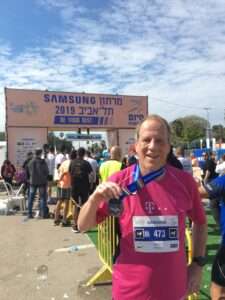 For the last two kilometres, the spectators carry you to the finish (or into the second round). There is a great atmosphere on both sides of the running track.
For the last two kilometres, the spectators carry you to the finish (or into the second round). There is a great atmosphere on both sides of the running track.
While the number of registrations for the marathon remains stable, the number of registrations for the half marathon continues to rise. In 2025, 10,000 runners will start in the half marathon.
After running the marathon in Bonn several times, as well as in Istanbul, Florence, Nice to Cannes and on Lake Garda, I completed my 15th marathon in Tel Aviv in 2019.
Due to Corona, there was a longer break from running – and without a goal, I also drastically reduced my training. Now I am registered again for the half marathon in Bonn in 2025.
If you want more detailed information about the running track and the individual competitions (also for inline skaters, handbikers or relays), follow the link to the organiser: Deutsche Post Marathon Bonn


 Today, more than half a millennium later, it is not much different. In a large part of the 160 wooden stalls placed between Remigiusplatz, Münsterplatz and Friedensplatz, you can buy beautiful and useful items, including hand-made crafts, which make for great Christmas presents for family and friends. Here you will find unique items that are not available in the usual department stores. Inspired by the lovingly decorated displays, you’ll discover gifts that you would never have thought of while lounging on your sofa at home. For example, original jewellery pendants or maybe hand-knitted socks made of pure wool for your daughter, who always has cold feet? And for your girlfriend, who already has everything, a new Christmas ornament is always a hit! And of course, every once in a while I need a little refreshment. The Flammlachs (salmon cooked on an open fire) smells seductive, but I usually return to the Rhine-region classic, Reibekuchen, potatoe pancakes with apple compote. In addition, the sounds of Christmas can be heard from everywhere. The happy laughter of children coming from the direction of the historic carousel reminds me of the dear little ones in my family. For them, I have to make a choice between a handcrafted wooden toy and a cute Perlgraupentier (a figurine of a German miner). Slowly, the shopping bag I brought with me is proving not big enough. But I don’t need to worry because one of the traditional stalls has a selection of beautiful baskets: I have been eyeing them for a long time. No sooner said than done – now I just have to get the hand-made wrapping paper and my Christmas market tour will be a roaring success.
Today, more than half a millennium later, it is not much different. In a large part of the 160 wooden stalls placed between Remigiusplatz, Münsterplatz and Friedensplatz, you can buy beautiful and useful items, including hand-made crafts, which make for great Christmas presents for family and friends. Here you will find unique items that are not available in the usual department stores. Inspired by the lovingly decorated displays, you’ll discover gifts that you would never have thought of while lounging on your sofa at home. For example, original jewellery pendants or maybe hand-knitted socks made of pure wool for your daughter, who always has cold feet? And for your girlfriend, who already has everything, a new Christmas ornament is always a hit! And of course, every once in a while I need a little refreshment. The Flammlachs (salmon cooked on an open fire) smells seductive, but I usually return to the Rhine-region classic, Reibekuchen, potatoe pancakes with apple compote. In addition, the sounds of Christmas can be heard from everywhere. The happy laughter of children coming from the direction of the historic carousel reminds me of the dear little ones in my family. For them, I have to make a choice between a handcrafted wooden toy and a cute Perlgraupentier (a figurine of a German miner). Slowly, the shopping bag I brought with me is proving not big enough. But I don’t need to worry because one of the traditional stalls has a selection of beautiful baskets: I have been eyeing them for a long time. No sooner said than done – now I just have to get the hand-made wrapping paper and my Christmas market tour will be a roaring success. And soon, I’ll be going to the Bonn Greeters’ Christmas market meet-up, which takes place every year. We’ll be swapping anecdotes and information, taking a stroll through the rows of stalls and sampling the wares at various stands. Of course, it’s all preparation for when we show guests around the market, as Christmas markets are one of the top points of interest.
And soon, I’ll be going to the Bonn Greeters’ Christmas market meet-up, which takes place every year. We’ll be swapping anecdotes and information, taking a stroll through the rows of stalls and sampling the wares at various stands. Of course, it’s all preparation for when we show guests around the market, as Christmas markets are one of the top points of interest.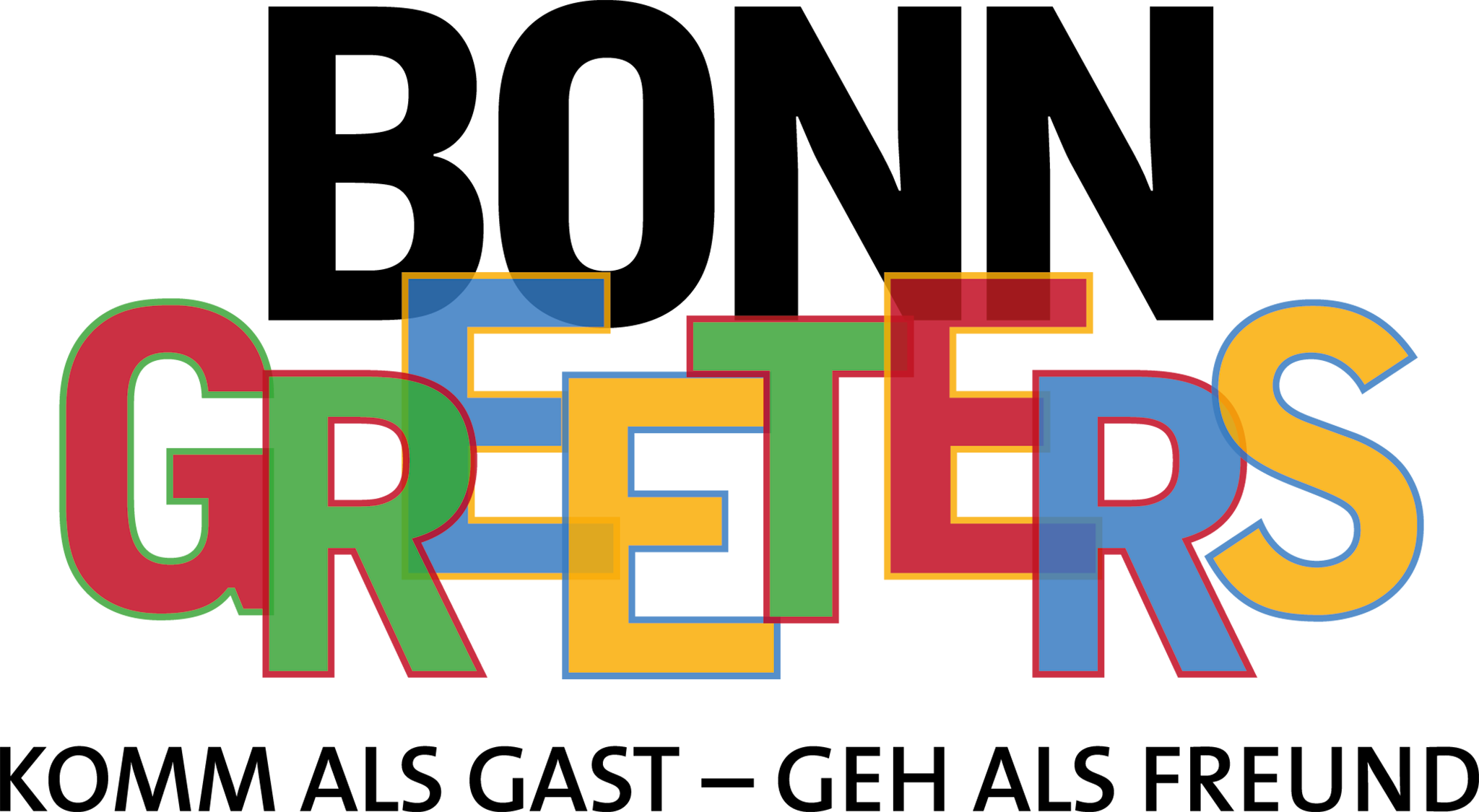


 The occasion for the celebrations was not only the 75th birthday of the master, who died in 1827, but above all the inauguration of the Beethoven monument by the Dresden sculptor
The occasion for the celebrations was not only the 75th birthday of the master, who died in 1827, but above all the inauguration of the Beethoven monument by the Dresden sculptor  When Liszt arrived in Bonn a few weeks before the festival, at which he was to conduct alongside court conductor of Kurhessen Spohr, he immediately made his mark. He flatly rejected Breidenstein’s idea of using the Hussars’ riding arena in front of the northern city wall as a concert hall – according to a contemporary source, a ‘stinking hut’. The result was perhaps the greatest miracle in Bonn’s architectural history, which is otherwise not particularly rich in miracles: in less than two weeks, a consortium of Bonn carpenters, with the support of Cologne cathedral master builder Zwirner, erected a wooden festival hall in the ‘Raess’schen Gärten’. Today, we know this area as the car park in the Viktoriakarrée. With a height of around 7 metres, the building measured approximately 62 × 23 metres. However, it is difficult for us today to understand how contemporaries calculated that this space of just over 1,400 square metres could accommodate up to 3,000 visitors plus an orchestra and choir. The Bayernzelt at Pützchens Markt needs more than 2,000 square metres for such large numbers. In any case, the concerts are said to have been attended by around 2,000 people each. Incidentally, the hall was sold for demolition a few weeks after the end of the festival. The wish of the correspondent of the Leipziger Zeitung thus remained unfulfilled. At the end of September, he had wished the hall a long life as a music venue and not as a carnival’s hall. This is somewhat reminiscent of the current discussions about the use of today’s
When Liszt arrived in Bonn a few weeks before the festival, at which he was to conduct alongside court conductor of Kurhessen Spohr, he immediately made his mark. He flatly rejected Breidenstein’s idea of using the Hussars’ riding arena in front of the northern city wall as a concert hall – according to a contemporary source, a ‘stinking hut’. The result was perhaps the greatest miracle in Bonn’s architectural history, which is otherwise not particularly rich in miracles: in less than two weeks, a consortium of Bonn carpenters, with the support of Cologne cathedral master builder Zwirner, erected a wooden festival hall in the ‘Raess’schen Gärten’. Today, we know this area as the car park in the Viktoriakarrée. With a height of around 7 metres, the building measured approximately 62 × 23 metres. However, it is difficult for us today to understand how contemporaries calculated that this space of just over 1,400 square metres could accommodate up to 3,000 visitors plus an orchestra and choir. The Bayernzelt at Pützchens Markt needs more than 2,000 square metres for such large numbers. In any case, the concerts are said to have been attended by around 2,000 people each. Incidentally, the hall was sold for demolition a few weeks after the end of the festival. The wish of the correspondent of the Leipziger Zeitung thus remained unfulfilled. At the end of September, he had wished the hall a long life as a music venue and not as a carnival’s hall. This is somewhat reminiscent of the current discussions about the use of today’s 
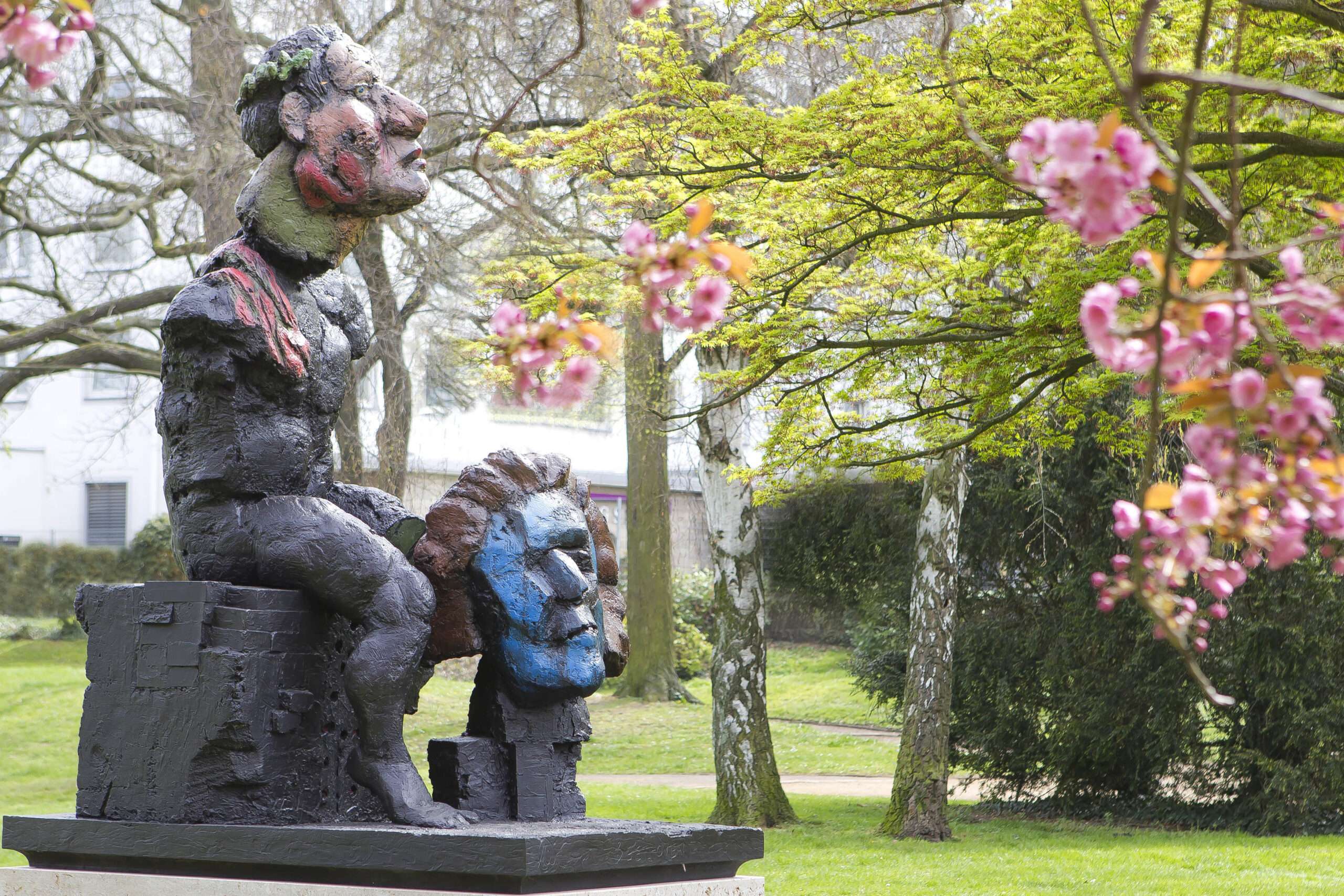
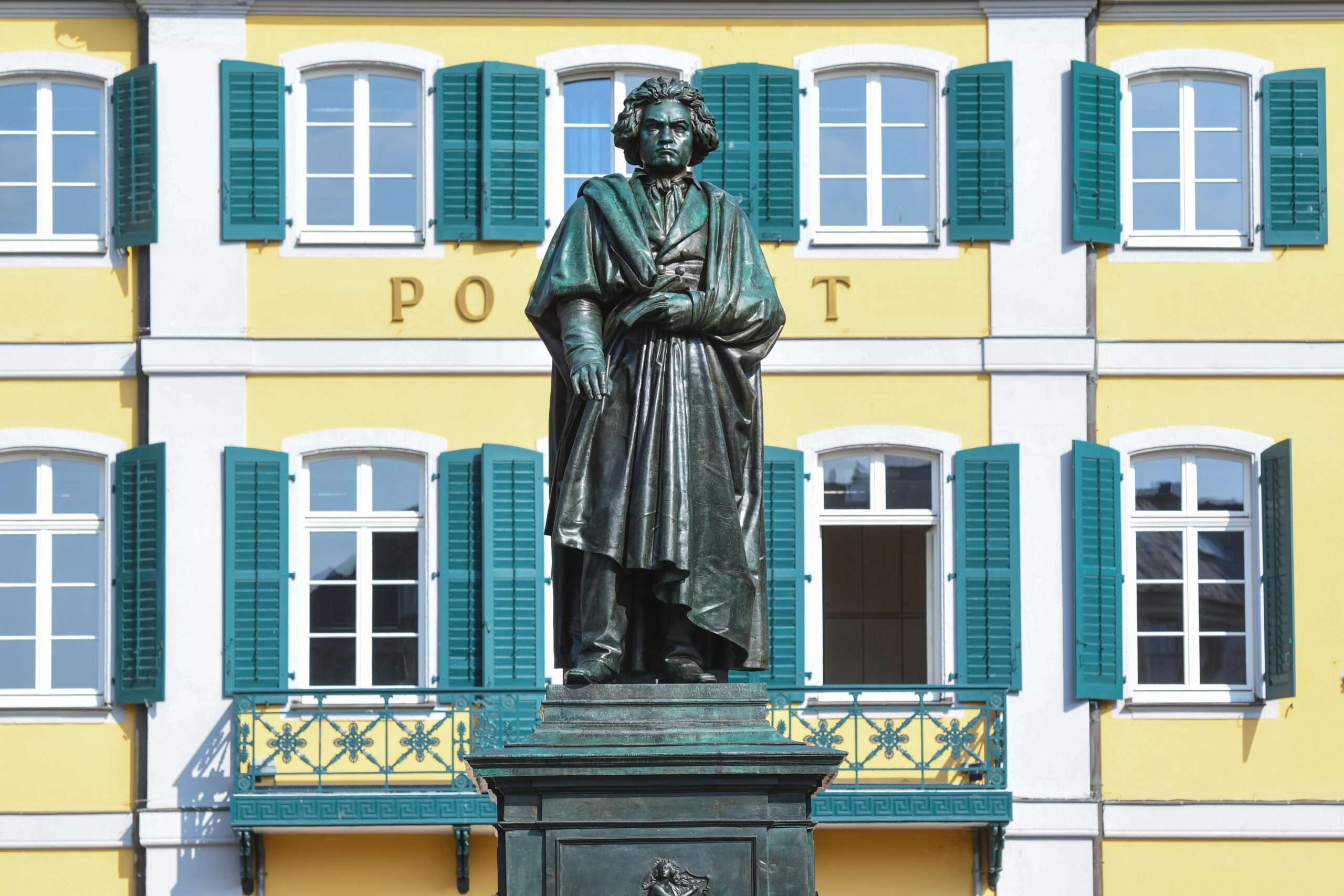
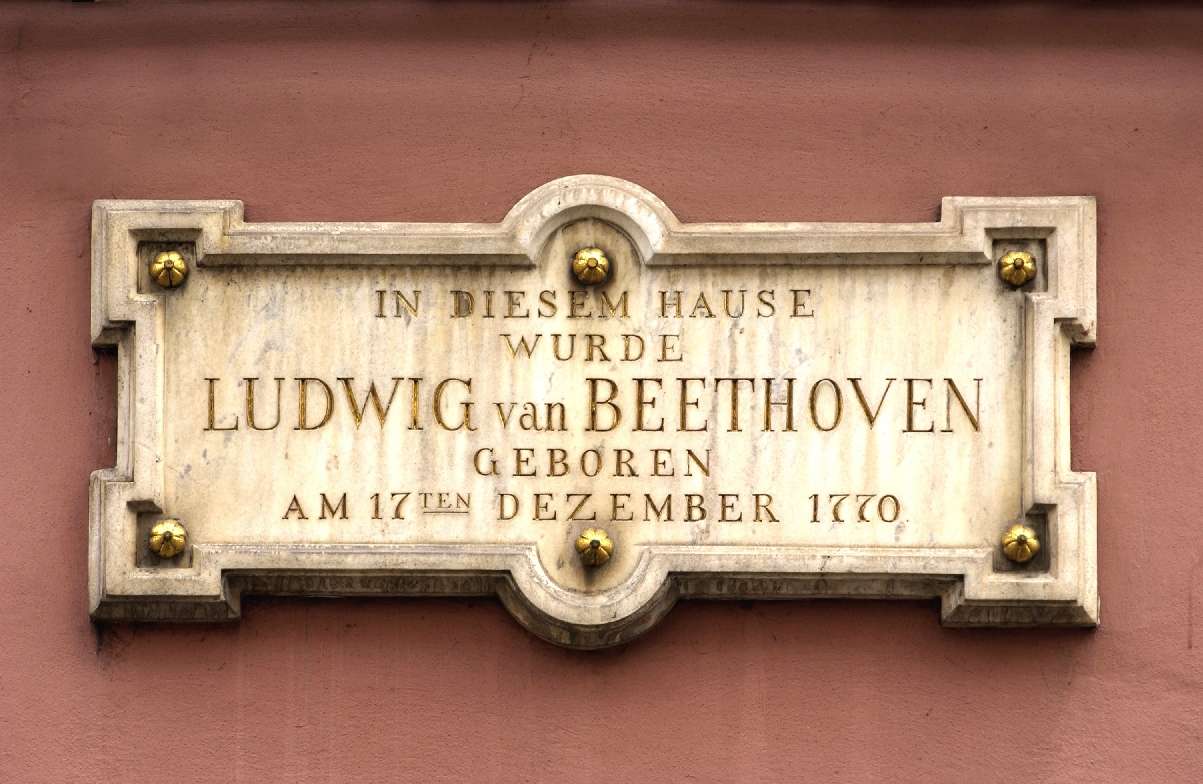
 If you look through the
If you look through the 
 In the first phase the white-flowered cherries, such as the plum cherry in Wolfstraße, Franzstraße or in the Rheinaue, bloom. After that it takes about 14 days for the thick pink-flowered Japanese flowering cherries (especially in Breite Straße and Heerstraße) to delight the eye.
In the first phase the white-flowered cherries, such as the plum cherry in Wolfstraße, Franzstraße or in the Rheinaue, bloom. After that it takes about 14 days for the thick pink-flowered Japanese flowering cherries (especially in Breite Straße and Heerstraße) to delight the eye.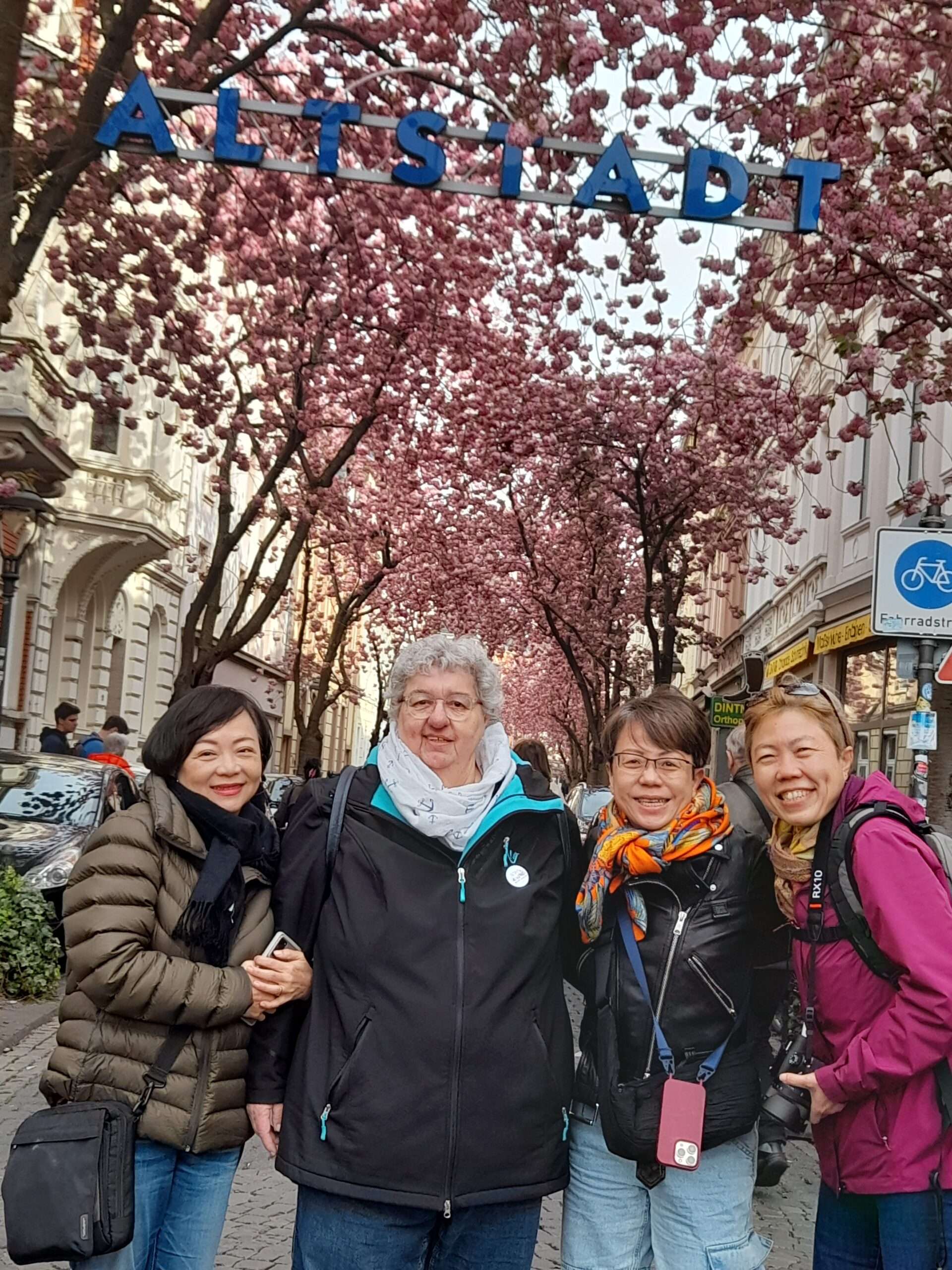
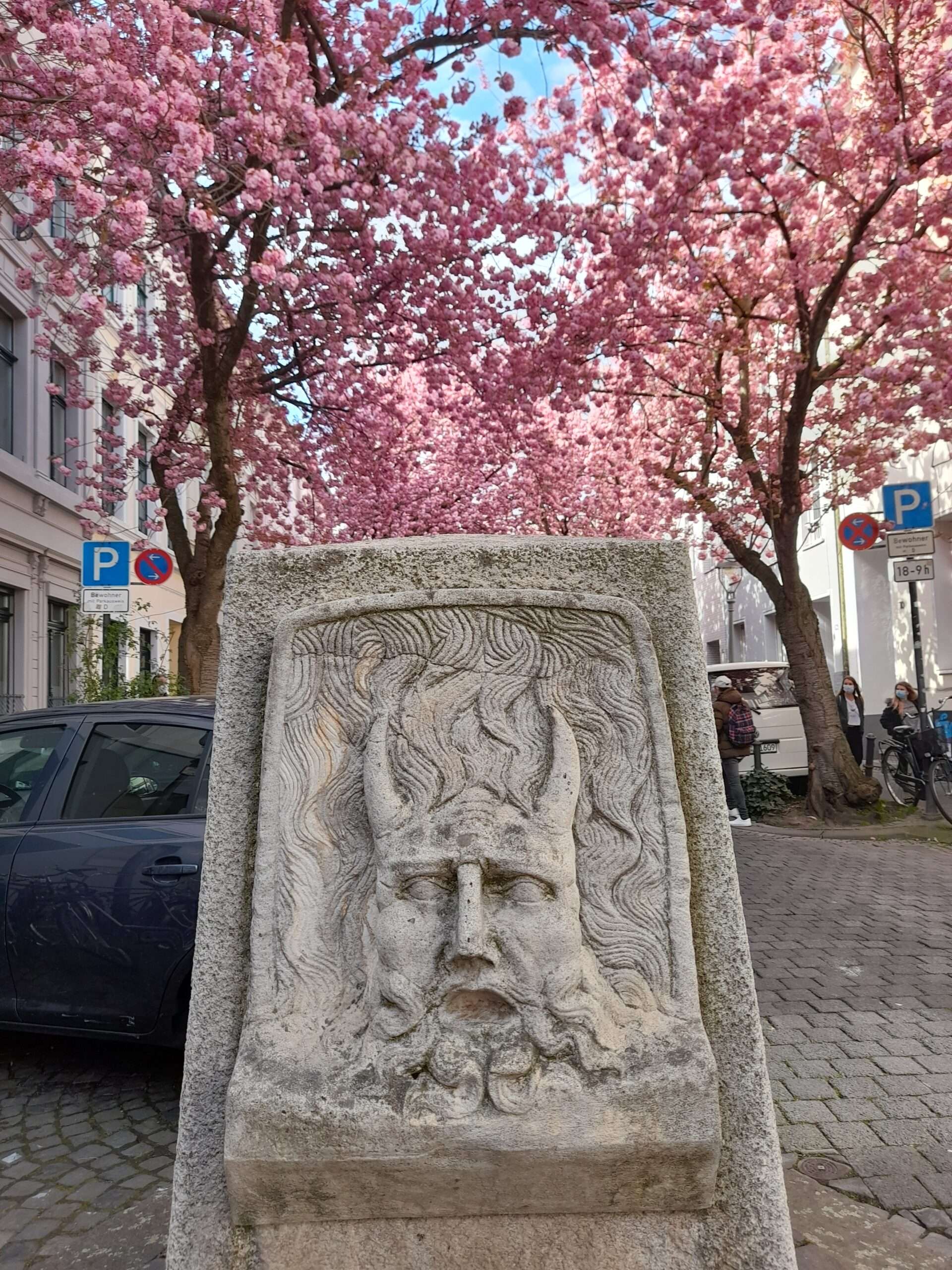
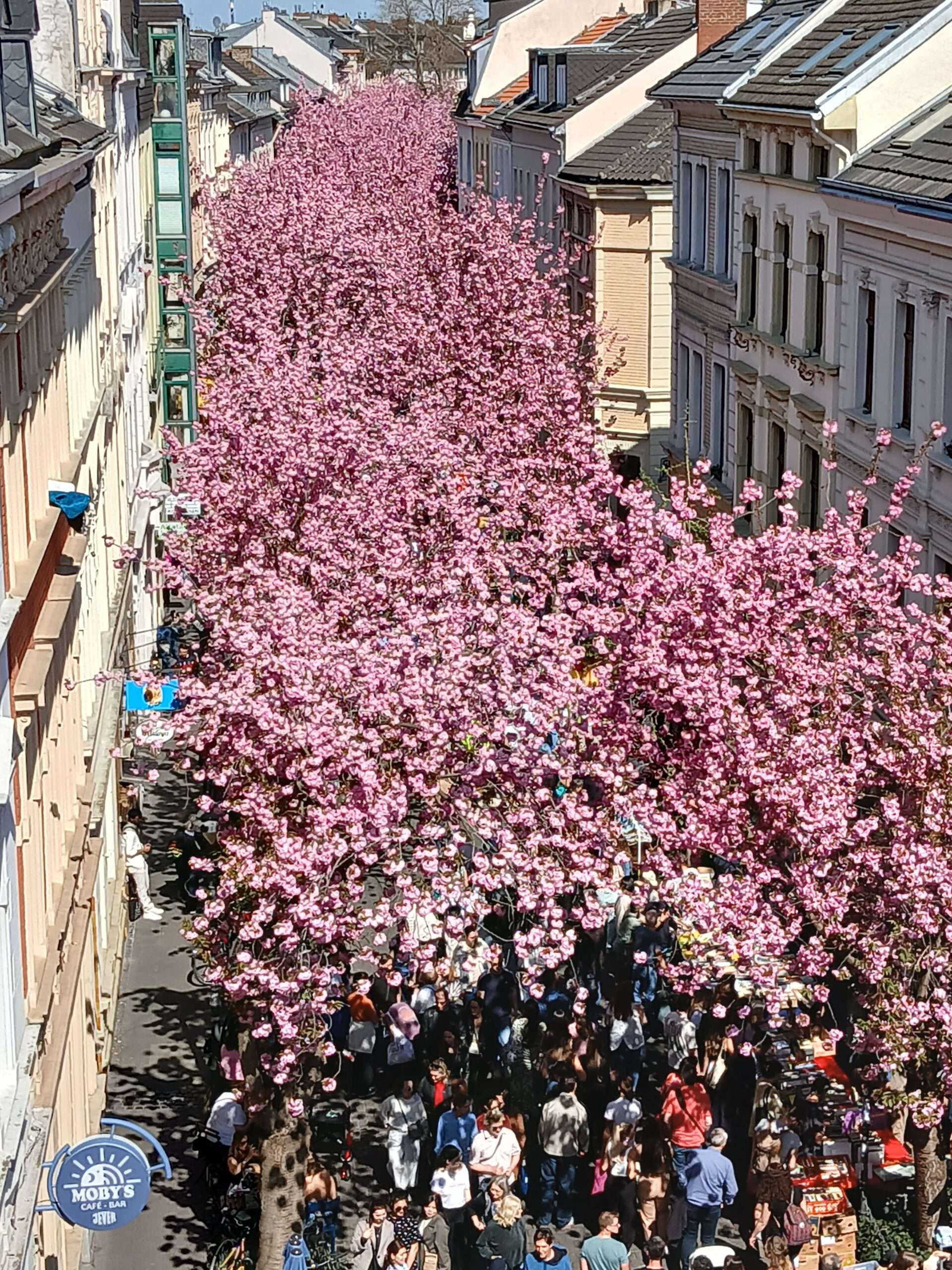

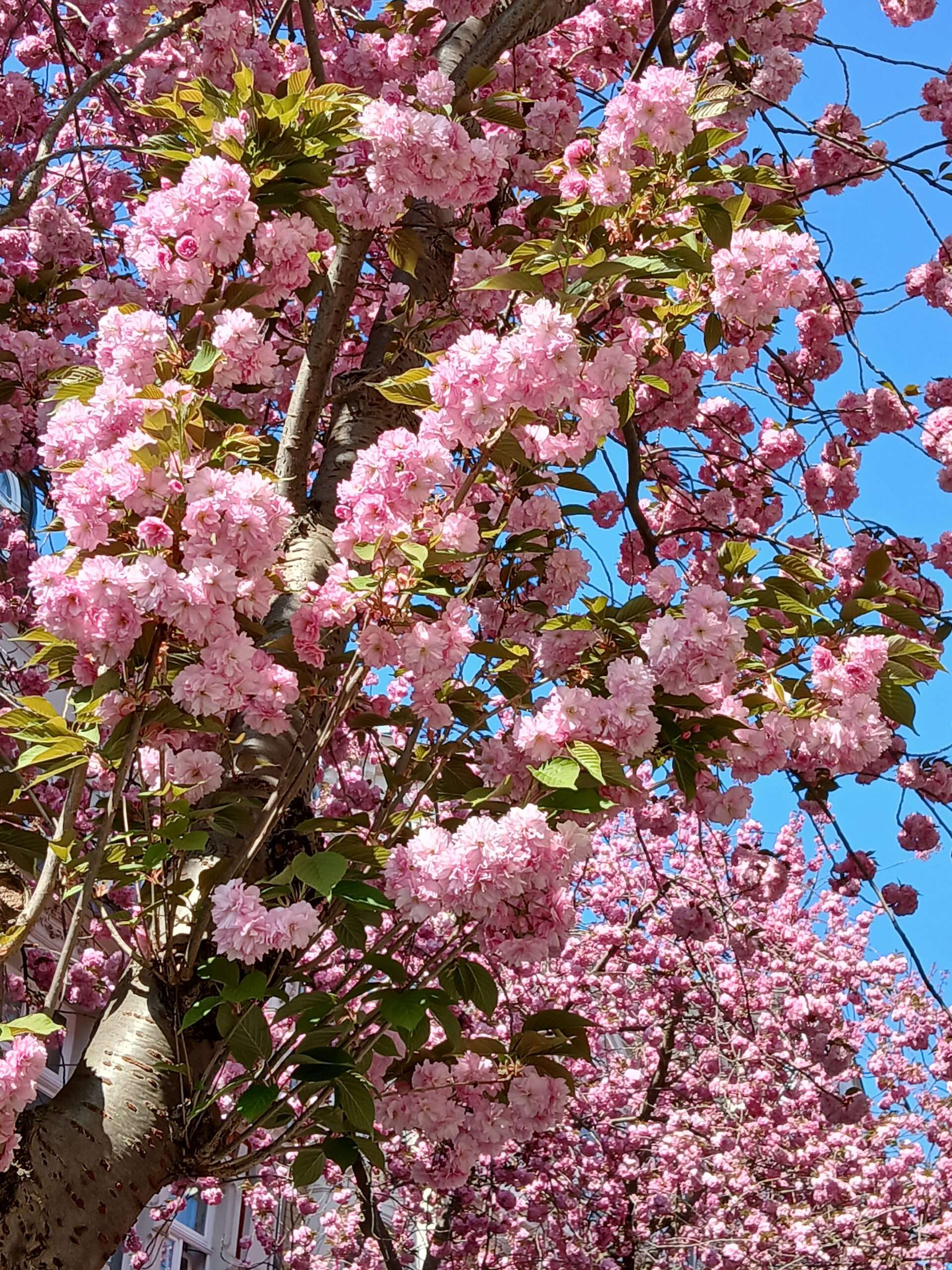
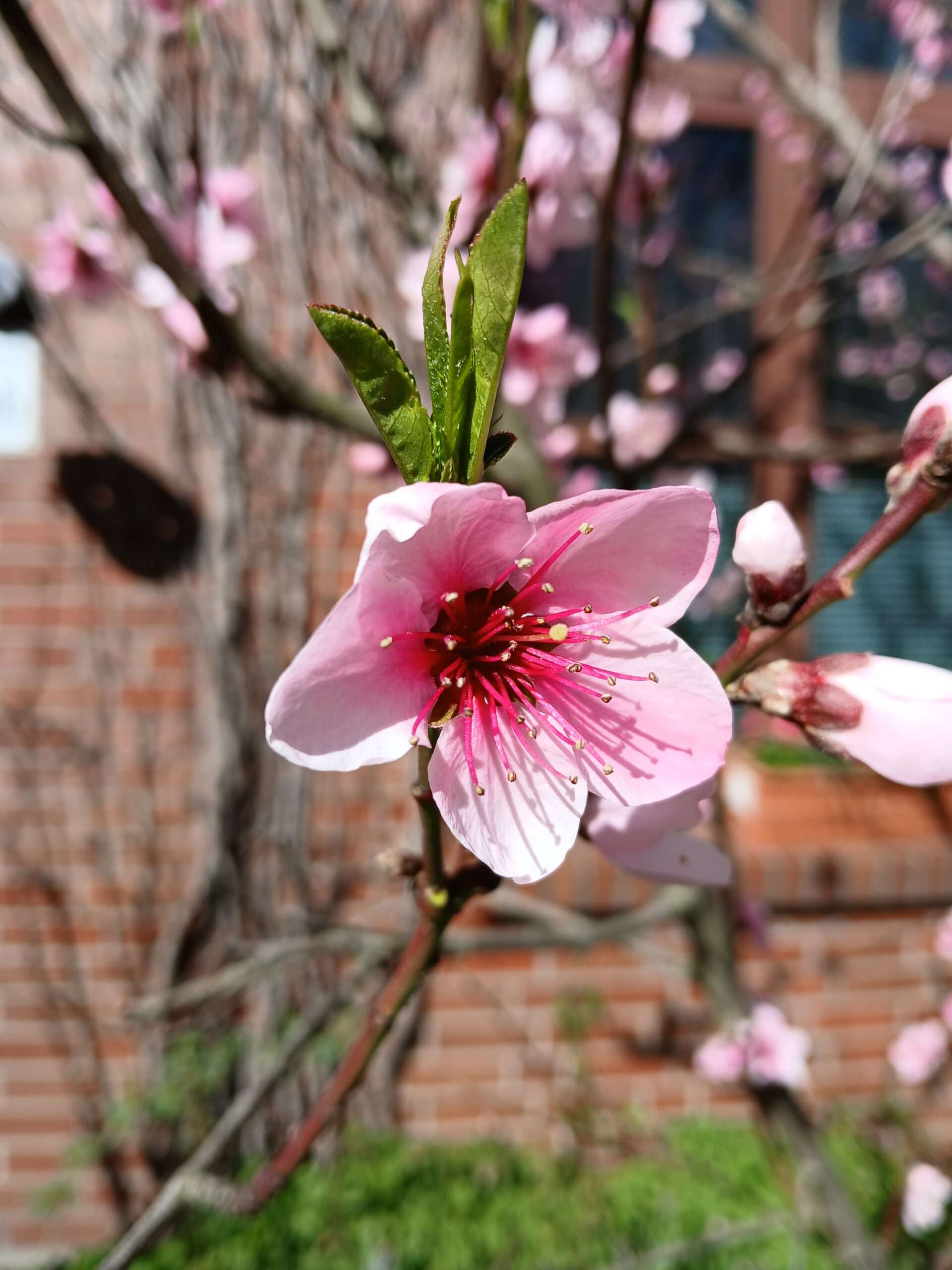



 Closing streets for a marathon was new for Bonn. The administration provided arguments against, such as, ‘The runners should stop at red lights’ (Source: GA from 11.06.2024) Despite this, a date in summer was chosen because it is traditionally a marathon-poor time. In addition, in the 1980s, shops closed at 2 p.m. on Saturdays, and most employees had the day off.
Closing streets for a marathon was new for Bonn. The administration provided arguments against, such as, ‘The runners should stop at red lights’ (Source: GA from 11.06.2024) Despite this, a date in summer was chosen because it is traditionally a marathon-poor time. In addition, in the 1980s, shops closed at 2 p.m. on Saturdays, and most employees had the day off. What I didn’t realise was that everyone who entered would win! Experience shows that only a few people stick to their training schedule from the beginning until the race in April. In addition to the twice-weekly training sessions starting at the company gate, there are Sunday runs starting at Kloster Heisterbach. And Helmut Tillmann is also one of the trainers!
What I didn’t realise was that everyone who entered would win! Experience shows that only a few people stick to their training schedule from the beginning until the race in April. In addition to the twice-weekly training sessions starting at the company gate, there are Sunday runs starting at Kloster Heisterbach. And Helmut Tillmann is also one of the trainers! And so, without ever having participated in a half marathon, I ran my first marathon on 22 April 2007. For the last time, the route also went through Godesberg, Rüngsdorf, Friesdorf, Poppelsdorf, past the Sportpark Nord to Josefshöhe and then to the market square.
And so, without ever having participated in a half marathon, I ran my first marathon on 22 April 2007. For the last time, the route also went through Godesberg, Rüngsdorf, Friesdorf, Poppelsdorf, past the Sportpark Nord to Josefshöhe and then to the market square. For the last two kilometres, the spectators carry you to the finish (or into the second round). There is a great atmosphere on both sides of the running track.
For the last two kilometres, the spectators carry you to the finish (or into the second round). There is a great atmosphere on both sides of the running track.
Recent Comments